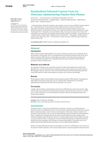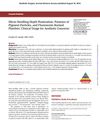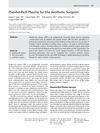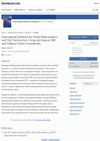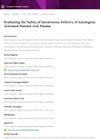Platelet-Rich Plasma Therapy: Key Infection Prevention Practices and Strategies for Safety Risk Reduction
October 2025
in “
Infection Control and Hospital Epidemiology
”

TLDR Standardized protocols are crucial for safe and infection-free platelet-rich plasma therapy.
The document reviews the use of platelet-rich plasma (PRP) therapy, emphasizing the need for standardized protocols to prevent infections and ensure safety. It identifies risks such as bloodborne pathogen transmission and medication safety issues through an internal audit within a large health system. Recommendations include using gloves, single-use components, and proper labeling and documentation. The review stresses collaboration with stakeholders to develop best practices and align with regulatory standards, as PRP is considered a blood product and largely investigational. The findings highlight the importance of standardizing PRP practices to minimize variability, prevent microbial contamination, and enhance safety, especially as its use expands in fields like orthopedics and dermatology.
